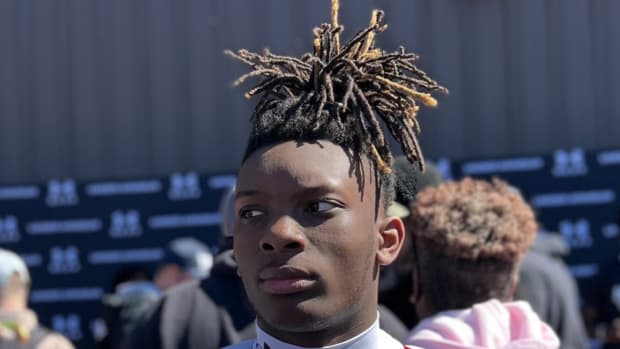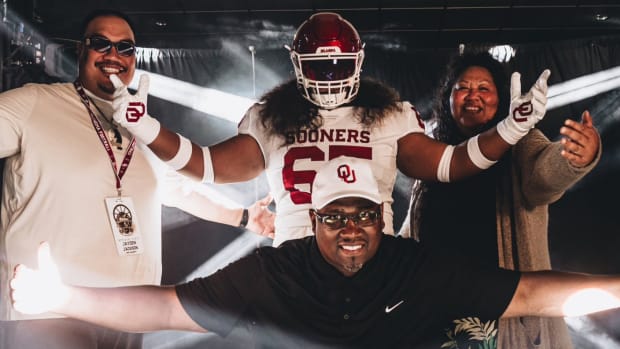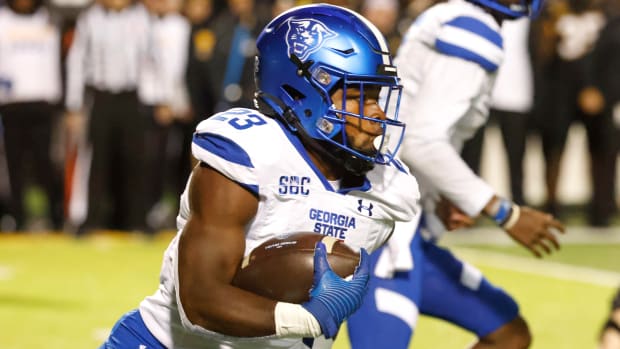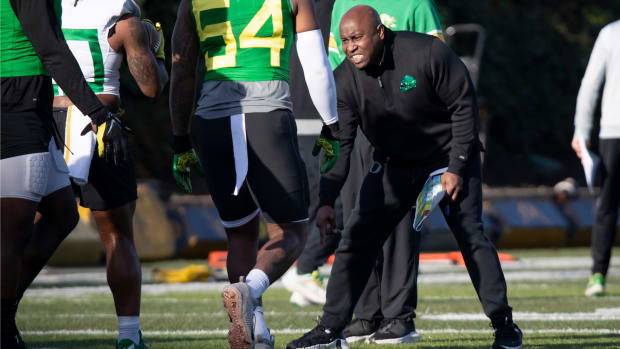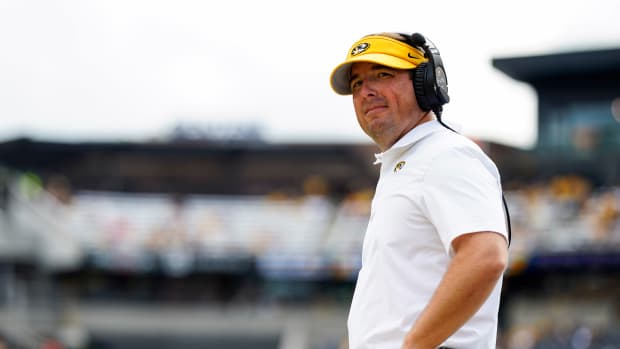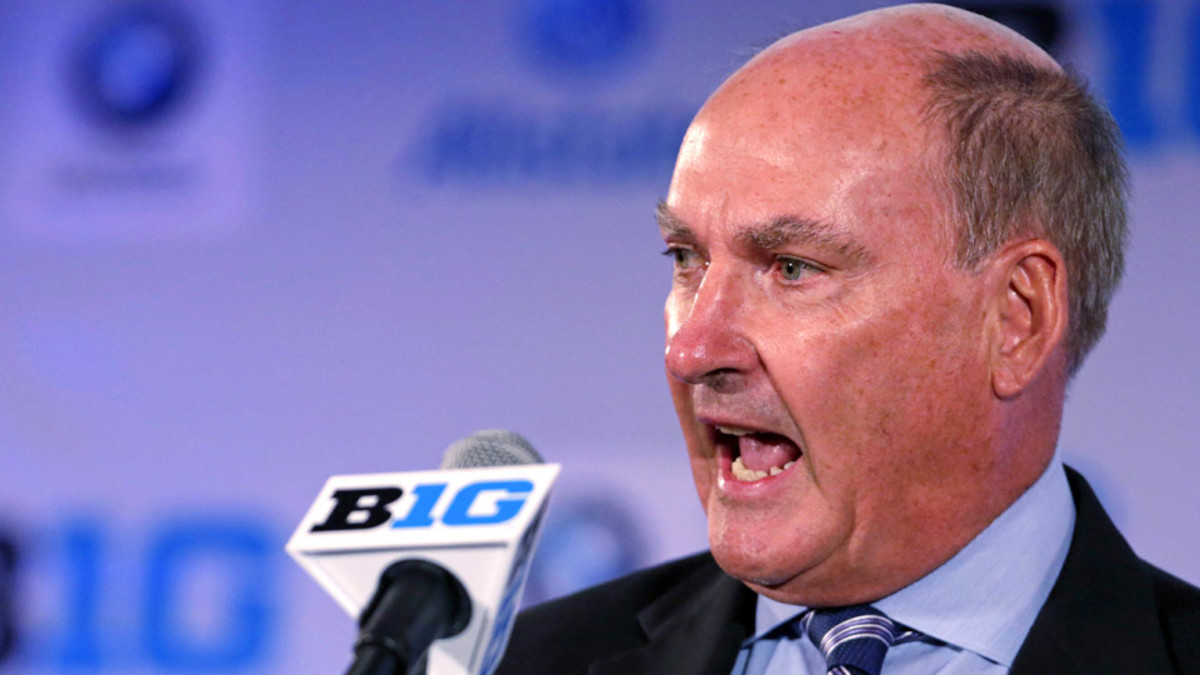
Jim Delany reinforced plaintiffs' key points in O'Bannon v. NCAA
OAKLAND, Calif. -- One influential college athletics leader left the witness stand Friday after nearly five total hours of cross examination only to be replaced by a guy who probably wields even more power. When plaintiffs' attorneys in O'Bannon v. NCAA finally tired of battering NCAA president Mark Emmert, they excused him and waited patiently for their turn to cross examine Big Ten commissioner Jim Delany as they try to convince the judge that the NCAA and schools have engaged in a conspiracy to deny athletes the chance to sell their name, image and likeness rights.
In terms of sheer courtroom fun, the matchup of Delany and plaintiffs' lead attorney Michael Hausfeld felt like the Texas-USC Rose Bowl. On one side sat Delany, the man with the stones to launch the first conference cable network and the gumption to block a college football playoff for years. On the other side stood Hausfeld, who has taken on Exxon, Texaco and the ghosts of the Nazi party. The clash would be epic.
Except it wasn't.
Hausfeld's cross lasted 52 minutes -- 20 fewer than NCAA outside counsel Luis Li's direct examination. Other than a few moments, it was quite cordial. Delany, expected to be a challenging witness to say the least, made one of the plaintiffs' key points during Li's direct exam. Hausfeld didn't even need to ask all the questions he had prepared. "He provided all the information that Michael wanted to bring out in cross examination," fellow plaintiffs' attorney Bill Isaacson said. "So it became unnecessary."
STAFF: Check out all of SI.com's coverage of the O'Bannon v. NCAA trial
What did Delany do? He spoke honestly about what he would like to see happen in college athletics.
Outside of the Big Ten, Delany is massively unpopular. He continually stood in the way of a college football playoff. He essentially claimed an SEC team beat a Big Ten team for a football national title because the SEC team was faster and dumber. He created a cash cow of a cable network while still banging the drum for amateurism.
But Delany isn't nearly as callous as he's made out to be. As a businessman, Delany has been an exemplary CEO who always fights to put his company in the best possible position. As a former college athlete (North Carolina basketball), Delany never has shied from expressing his love and admiration for the uniquely American model of college athletics. He's proud the Big Ten leaves money on the table by televising non-revenue sports and by not running ads for alcoholic beverages on the Big Ten Network. He takes great joy in the fact that his commercial efforts have provided thousands of educational opportunities. He wants every college athlete to have the experience he did -- a successful tenure on the court/field combined with an educational experience that sets up the student for success later in life.
That's why, during his direct examination, Delany spoke of his desire to return to a system in which freshmen are ineligible to play varsity sports. That was the rule when he was in Chapel Hill and Delany believes that year in residence would be a "silver bullet" to help athletes who are at-risk students adjust to the rigors of college coursework. He also said that "when basketball season is over, they probably should just put a lock on the gym."
STAPLES: Judge poses key questions to Mark Emmert in O'Bannon v. NCAA
Delany is tired of athletes being asked to spend all year on voluntary -- read: mandatory -- workouts. He'd like to see athletes get a chance to spend a semester abroad if they chose. He believes they are supposed to be students first. As he said all this, he admitted he remains very much in the minority among the policymakers in college sports on those issues. (Case in point: The schools have recently passed rules allowing football and basketball coaches to spend more time with their players in the offseason.)
That admission from Delany hacked several questions off his cross examination.
The plaintiffs have spent the entire trial trying to prove that in today's NCAA, players are athletes first and students second. The NCAA's attorneys and most of its witnesses have insisted that isn't the case. They say the athletes are students who just happen to play sports. They say allowing football and men's basketball players to sell their name, image and likeness rights would drive a wedge between the athletes and the student body. The plaintiffs contend the wedge was driven long ago and extra money in the pockets of the athletes won't change that. Delany helped them make that case Friday by explaining the reforms he'd like to see that actually would make the players feel more like regular students and then by explaining that they'd get steamrolled if they came up for a vote.
Talk to a coach or an athletic director, and it becomes obvious such reforms are pipe dreams. The schools have moved too far the other way, and why should they go back? Football and men's basketball are a multi-billion dollar business. Why shouldn't the players hone their craft year-round? But if they do, plaintiffs' attorneys say, they should get a cut of the action from schools that rake in cash on television deals such as the one Delany struck when he created the Big Ten Network.
Delany's baby, a partnership with Fox that he said brings in about $110 million a year for the league's schools, also got some unflattering time in court Friday. During Delany's cross examination, Hausfeld showed a release form that Big Ten athletes were required to sign in 2007. Here's what it said:
"I hereby grant to the [school] and The Big Ten Conference and their assigns the right to publish, duplicate, print, broadcast or otherwise use in any manner or media, my name, photograph, likeness or other image of myself for any purpose the [school] or The Big Ten Conference determines, in its sole discretion, is in the interest of the University of Illinois or The Big Ten Conference, including without limitation uses in promotional and marketing materials and uses by the Big Ten Network, CBS, ABC and ESPN. All such uses shall be consistent with all applicable NCAA and Big Ten Conference rules and regulations. I agree that neither I nor my heirs shall be entitled to any compensation for the use of my name, photograph, likeness or other image of myself."
That's an awfully broad release. After all, it spans generations. Delany called it "boilerplate."
And while it might be standard legal language, it's damaging to a case built on the idea that a market for the names, images and likenesses of college athletes doesn't exist. "The NCAA and the schools have spent a lot of time studying -- work groups, task forces, releases, contracts -- and talking about name, image and likeness rights," Isaacson said. "And they come into court and say 'We've never really heard of this before.' It hasn't made any sense to us." It probably hasn't made much sense to Judge Claudia Wilken, either.
The NCAA has one more week to convince Wilken that amateurism and the integration of education and athletics make up for any harm the labor force incurs from the restrictions on selling name, image and likeness rights. To do that, the NCAA will need to make sure its own witnesses stop giving ammunition to the plaintiffs.
STAPLES: O'Bannon trial just the beginning: Jenkins case could unhinge NCAA
